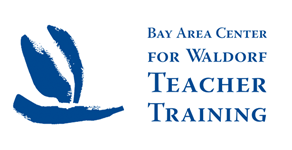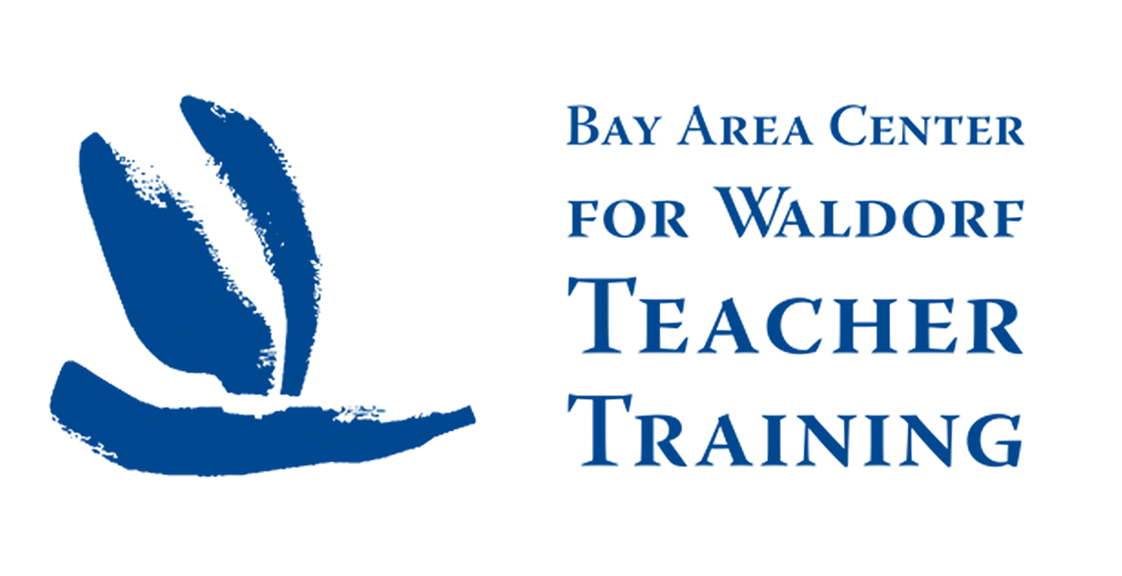The fourth and final article by our Northern California Waldorf Teachers Conference Keynote speaker Michael Howard.
In this fourth and final article, we will focus on the challenges of living and working together in community. Although our purpose is the education of our children, we have seen that our first educational task is to make something of ourselves and that this means developing our spirit individuality. While striving to become evermore free in our teaching is one way we develop our self, another way is through the effort we make at working together as colleagues. Spirit individuality must live not only in the classroom but permeate all our visible and invisible interactions with each other.
In this article, we will consider the way community life is necessarily changing today because of the equally necessary intensification of individuality in more and more people. Until relatively recently, community has always been founded on commonality—a common worldview, values and way of life. In the first instance, the widespread strengthening of individuality makes the sharing of common values, common ways of thinking and doing things increasingly unrealistic. Community based on commonality will not disappear overnight, but there is a profound reason why we should not try to hold onto it. The enhancement of individuality is an evolutionary necessity that challenges us to reconceive our idea and expectations of community. The way forward is to cultivate the necessary capacities for a new form of community founded on individuality. Rudolf Steiner speaks about this new form of community in another Younger Generation lecture:
No one can adequately describe the impulse that has entered human evolution unless he draws attention to the relationship of ego to ego, free from the sheaths, which is emerging in a totally new way, though slowly, today… In our age we are going from experiencing the other through the sheaths, to direct experience of the other’s ego…
The great transition to this newer age consists in human meeting human free of their sheaths–according to their inner disposition, to what the soul demands; but the capacities for this untrammeled encounter have not yet been acquired; above all, we have not yet acquired the possibility for a relation between ego and ego. But this must be prepared for by education. That is why the question of education is of such burning importance.
Rudolf Steiner, The Younger Generation, Lecture 12
In this context, Rudolf Steiner uses the term “ego” as a synonym for both “I” and “individuality.” In “Social and Anti-Social Forces,” he speaks about how education can develop this capacity for meeting “I to I”:
It is tremendously important that the impulse should awaken in us, not merely to feel sympathy or antipathy towards the people we meet, not merely to hate or love something connected with the person, but to awaken a true picture of the other in us, free from love or hate…this ability to develop an imaginative faculty for the other is something that must enter into pedagogy and the education of children…
Rudolf Steiner, “Social and Anti-Social Forces,” p. 14-16
What is this imaginative faculty that sees others free of sympathy or antipathy? In a 2014 interview, Yo-Yo Ma uses a more contemporary term that will readily make clear what capacity Steiner is referring to that must be developed through education:
Because the world economy is so hyper-competitive, much of the focus in education these days, from Singapore to Shanghai to American schools, is on STEM — science, technology, engineering and math. As important as that is, it is shortsighted. We need to add the empathetic reasoning of the arts to the mix — STEAM…Empathetic thinking is something that is severely missing in education today…
“Behind the Cello,” an interview with Yo-Yo Ma posted online, 01/21/2014
Today, many people recognize empathy as a fundamental social capacity that needs to be developed more widely. The question is: Can empathy be schooled and, if so, how?
Surely there are many ways, but one of the most effective ways to develop empathy is through the arts. Despite the insight and advocacy of people like Yo-Yo Ma, this potential of art remains under-appreciated and, frankly, calls for extensive artistic-pedagogical research to develop the methods that will serve this purpose. When we look at a form or a color, we observe something physical outside ourselves. But when we feel the weight or levity of a form or the warmth or coolness of a color, something remarkable occurs: we feel ourselves within the form or color, or we feel the color or form within ourselves. In either case, the duality of outer and inner, of physical and non-physical, falls away; we become one with the color and form. How is this possible? It is not the physical color or form with which we unite, but the non-physical color and form that is made visible through the physical pigment, clay or wood. It is our soul spirit that resonates with the soul-spiritual dimension of color and form.
If empathy is the capacity to live into the inner soul-spiritual reality of another human being, then in cultivating the capacity to feel the non-physical qualities of color and form we are indeed schooling empathy.
The practical implications for schooling empathy in this way becomes apparent when we turn to the social issues summed up under the acronym DEI: Diversity, Equality, Inclusion. With the recent surge in concerns about race and gender and all forms of bias and prejudice, educators are inundated with all manner of ways to address these crucial matters. As we have just seen, in cultivating artistic feeling we learn to separate our personal feelings of like/dislike for color from our capacity to feel objective qualities like their warmth and coolness. This will not change human nature overnight but, in painting, our children learn to confront their inherent biases towards colors and transform them into a capacity to appreciate and harmonize all colors in their paintings.
All forms of prejudice arise through a lack of inner freedom; they originate in us as unfree thoughts, feelings and will impulses. Short-term solutions may be necessary in the form of laws, regulations and protocols, but if we seek a long-term solution to all forms of conscious and unconscious bias, then as cultural activists we will seek every opportunity to build a culture dedicated to awakening inner freedom in more and more individuals through artistic activities. By developing empathy through art and other subjects, we are addressing racism and all forms of prejudice and bias.
In lecture 12 of The Younger Generation, Rudolf Steiner offers an additional insight for understanding and addressing all matters related to diversity, equity and inclusion. Each of us is incarnated into a unique constellation of physical, etheric and astral bodies that Rudolf Steiner refers to in this context as our sheaths. Racism is a form of practical materialism insofar as it is rooted in seeing only the outer physical body, and not the soul and spirit of the other. Going to the other extreme and focusing solely on the universal human has other problems. Between these two extremes, we have the possibility of cultivating empathic interest in the profound challenges each individual contends with in working through their particular constellation of sheaths. Cultivating empathic interest in each other’s spiritual striving to meet the challenges posed by our particular physical, etheric and soul constitution is the surest way to meet each other I to I, individuality to individuality. In learning to meet I to I, we are building a new form of community founded on individuality.
I will conclude with another perspective on the future of human community with a longish quote where Rudolf Steiner distinguishes between three forms of social order: the power society, the bargaining society and the communing society. His comments about the last form of human society that is founded on what he calls a comprehensive will “offers the promise of great hope for humanity,” according to Pietro Archiati in his helpful summary of Steiner’s view:
In ancient times there existed a social structure controlled by ‘power‘: a single will–not human but divine–ruled the social organism. In the age of the pharaohs, for instance, initiation allowed access to the divine will, and the king imparted this will to the masses. The individual will had not yet awoken within separate human beings.
Rudolf Steiner calls the second stage, in which we still find ourselves today, the `bargaining society’. In this phase, the individual will has woken within each person but the capacity to harmonize these will atoms…is hardly developed at all. All the distinct will-directions, therefore batter against each other…
The third social phase offers the promise of great hope for humanity. Rudolf Steiner calls it the `communing society’. …In the communing society, the multiplicity of individual will impulses are harmonized with one another, without them being compromised or constrained; the distinctness of every single individual is, as far as possible, supported and encouraged. …the communing society is underpinned by a striving to form the `comprehensive will’…not…a `common will’…The concept `comprehensive’ or `total will’ means an integration of the individual and the social (community).
To form the total will, it is necessary to affirm the individual will of each person, to create a shared outer framework that allows all individual wills to mutually foster and advance each other. Of course, this is a much harder undertaking than reducing everything to a single will. But easier is not better. Freedom is harder than unfreedom, but not worse.
Individual will means the will of the true ego (individuality) of every human being. This will
alone is truly individual…Most people usually know what they wish, but seldom what they will. The individualization of the will, as a process of increasing consciousness, has nothing to do with the egotism of the lower ego — for this is not individual at all. We can recognize real individuality by its spiritual and intuiting character, which can, in turn, only be grasped by thinking.
Pietro Archiati, From Christianity to Christ, p. 92-95
Democracies in many countries, including the United States, are in peril. As imperfect as democracy is, and as tempting as it may be to retreat to a power society, this is the time to better understand the nature of a communing society and to begin developing the necessary artistic capacities for exercising a comprehensive, creative will to truly meet the challenges of our time.
The perspectives we have considered in these four articles offer a practical vision for the future of Waldorf education as communities of cultural research and activism dedicated to supporting and serving the development of every child and adult in at least three ways:
- Cultivating artistic and scientific ways of knowing so that humankind can learn to know soul-spiritual realities as we presently know physical realities;
- Cultivating the insight and capacities for transforming the lack of freedom of our soul personality into the inner freedom of our spirit individuality;
- Learning to meet I to I so that the spirit of individuality permeates all our teaching and the school community as a whole.
This is the cultural activism that inspires and motivates me as an artist and teacher. I look forward to taking up this cultural task with other artists and educators who are similarly inspired to work towards realizing such ideals, even as an enterprise of lifetimes.







